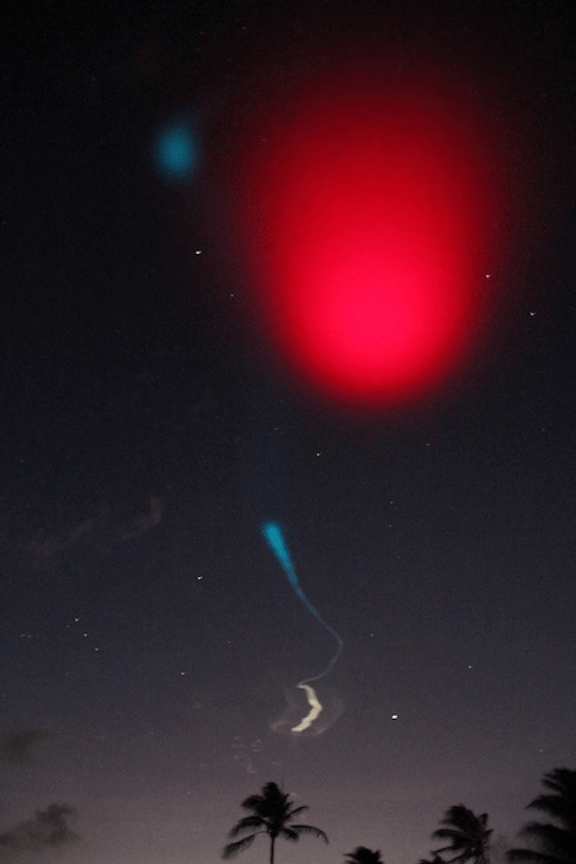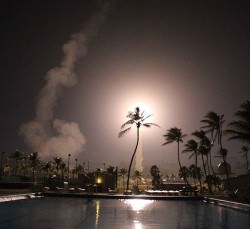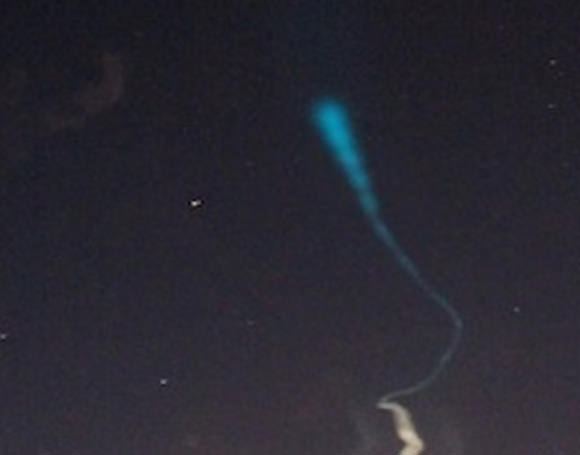Ball lightning? Spectral orbs? Swamp gas? Early this morning, May 7, these eerie glowing trails were seen in the sky above the Marshall Islands and were captured on camera by NASA photographer John Grant. Of course, if NASA’s involved there has to be a reasonable explanation, right?
For a larger image (and to see what really caused the trails) click below:

Although it might look like cheesy special effects, these colorful clouds are actually visible trails that were left by two sounding rockets launched from Roi Namur in the Marshall Islands, at 3:39 a.m. EDT on May 7. The rockets were part of the NASA-funded EVEX experiment to study winds and electrical activity in the upper atmosphere.
The red cloud was formed by the release of lithium vapor and the white-and-blue tracer clouds were formed by the release of trimethyl aluminum (TMA). These clouds allowed scientists on the ground from various locations in the Marshall Islands to observe neutral winds in the ionosphere.
“Neutral winds are one of the hardest things to study,” said Doug Rowland, an EVEX team member at NASA’s Goddard Space Flight Center in Greenbelt, Maryland. “One can’t physically see the wind, and it is difficult to measure from the ground, so we use the TMA as a tracer.”

The EVEX (Equatorial Vortex Experiment) rockets were launched 90 seconds apart. By staggering the launches the two rockets were able to gather data simultaneously at two altitudes through the ionosphere.
Beginning about 60 miles (96 km) up, the ionosphere is a crucial layer of charged particles surrounding our planet. This layer serves as the medium through which high frequency radio waves – such as those sent down to the ground by satellites – travel. Governed by Earth’s magnetic field, high-altitude winds, and incoming material and energy from the sun, the ionosphere can be calm at certain times of day and at other times turbulent, disrupting satellite signals.
The EVEX experiment is designed to measure events in two separate regions of the ionosphere to see how they work together to drive it from placid and smooth to violently disturbed. Such information could ultimately lead to the ability to accurately forecast this important aspect of space weather.
Image source: NASA’s Goddard Space Flight Center on Flickr


Beginning about 60 miles (96 km) up, the ionosphere is a crucial layer of charged particles surrounding our planet. Seriously?
These orbs (?) they are putting up are leaving spectacular trails [like this].
Sometimes they fail adn create huge, highly documented, spirals.
These components creates great reading through.
Your effort has truly compensated off for you personally.
This is extremely good writing with substance unlike other articles
about this subject which contain dribble. I respect your ideas.